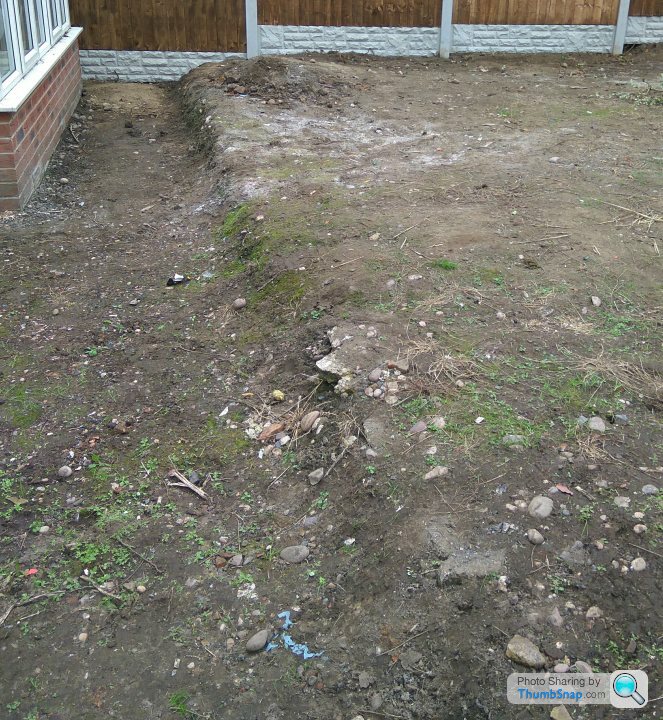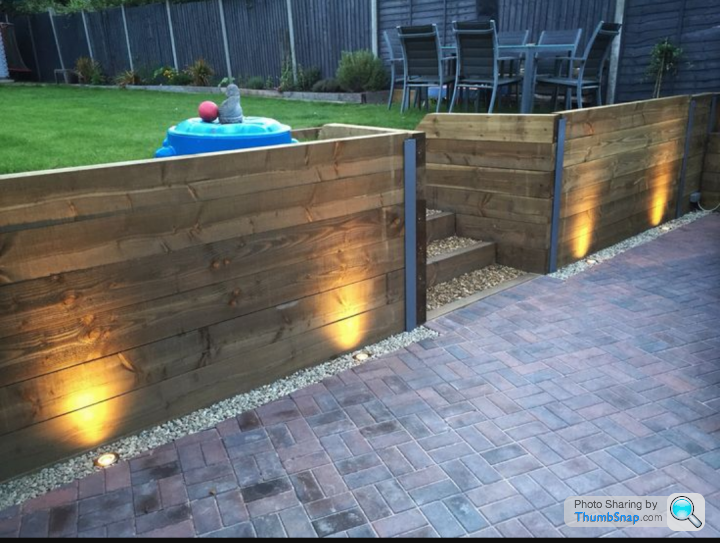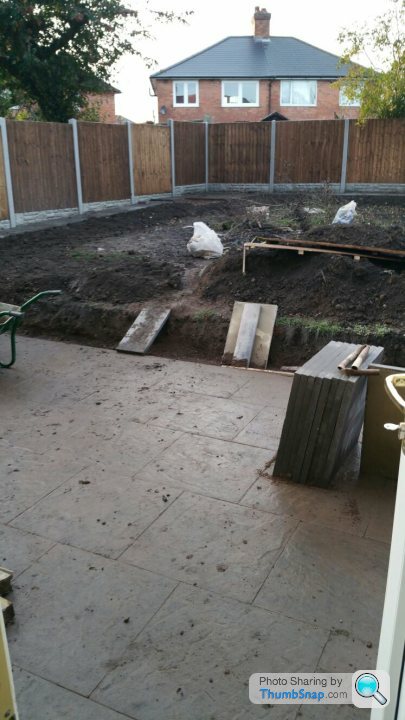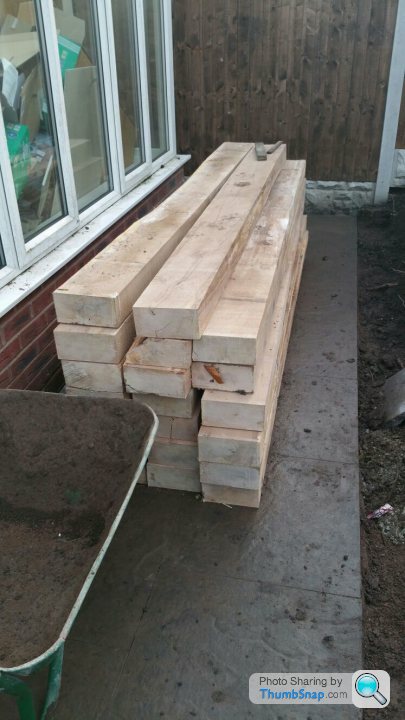Railway sleeper wall
Discussion
Im just looking for some quick advice regarding using oak railway sleepers for a retaining wall

Idea is to have a wall similar to this... ...

The height difference of my garden between the lower ground and upper ground level is 40cm, (dimensions of the sleepers are 10x20cm), so 2 sleepers would be in contact with the soil, then I intend on having 2 sleepers on top, making the overall height of the wall 80cm (4 sleepers) tall.
Would untreated oak railway sleepers be ok?
Would a plastic weed membrane be recommended behind the wall against the soil?
What would the best method be to make it a sturdy as possible?

Idea is to have a wall similar to this... ...

The height difference of my garden between the lower ground and upper ground level is 40cm, (dimensions of the sleepers are 10x20cm), so 2 sleepers would be in contact with the soil, then I intend on having 2 sleepers on top, making the overall height of the wall 80cm (4 sleepers) tall.
Would untreated oak railway sleepers be ok?
Would a plastic weed membrane be recommended behind the wall against the soil?
What would the best method be to make it a sturdy as possible?
A few pictures I've just taken of the area they'll be sitting up against...

And the sleepers...

Would these be ok to have put up without any treatment?
The builder I'm having the garden done has said he'll put in a solid concrete base, stick concrete posts around the back, and (he never said how) attached the sleepers to the posts.
He also mentioned having steel rods going through the centre of the sleepers, right through into the concrete base.

And the sleepers...

Would these be ok to have put up without any treatment?
The builder I'm having the garden done has said he'll put in a solid concrete base, stick concrete posts around the back, and (he never said how) attached the sleepers to the posts.
He also mentioned having steel rods going through the centre of the sleepers, right through into the concrete base.
Timing will be an issue now with treating them, they're due to be fitted tomorrow.
I asked the opinion of a few different people, some in the know, and they all seem pretty adamant, if it's oak wood then it's not necessary.... Though looking at them, they absolutely look like they'd need some sort of treatment for them to last more than afew years...
I'll end up putting some sort of vanish/oil coating on the fronts, but obviously once they're fitted getting to the back won't he possible
I asked the opinion of a few different people, some in the know, and they all seem pretty adamant, if it's oak wood then it's not necessary.... Though looking at them, they absolutely look like they'd need some sort of treatment for them to last more than afew years...
I'll end up putting some sort of vanish/oil coating on the fronts, but obviously once they're fitted getting to the back won't he possible
I was lead to believe that oak reacted badly to metal, and wooden dowels should be used instead?
This guy made a retaining wall with sleepers and wooden dowels..
https://www.youtube.com/watch?v=sQQpbJfauso
This guy made a retaining wall with sleepers and wooden dowels..
https://www.youtube.com/watch?v=sQQpbJfauso
Leroy902 said:
I could as an act of desperation try delaying getting them fitted, and give me tomorrow to put some sort of treatment on them...
Is there any specific brand/type that anyone could recommend?
Honestly, nothing you can legally buy and paint on is going to make any significant difference, you'll get a good few years out of it anyway.Is there any specific brand/type that anyone could recommend?
I treated mine with several coats of Cuprinol Total which has now been replaced by something else. However if I was doing it again I would treat the edges that are not visible with bitumen paint.
Oh and I fixed them with timberlock screws, put them on a gravel base, back filled behind with gravel with a weed membrane between the soil and gravel.
Oh and I fixed them with timberlock screws, put them on a gravel base, back filled behind with gravel with a weed membrane between the soil and gravel.
Gassing Station | Homes, Gardens and DIY | Top of Page | What's New | My Stuff




 h to drill into so stock up on bits. I use wurth sleeper screws which are very strong.
h to drill into so stock up on bits. I use wurth sleeper screws which are very strong. 